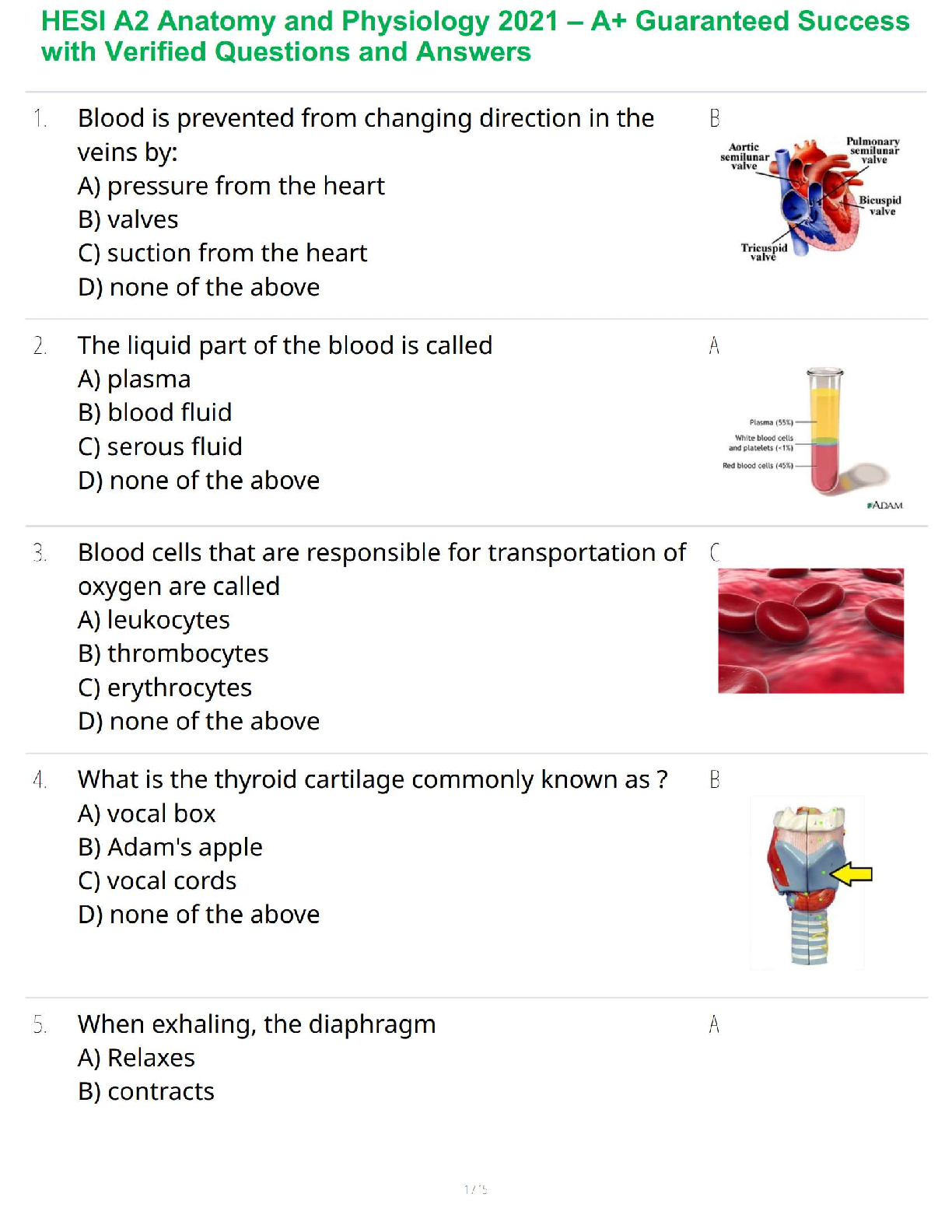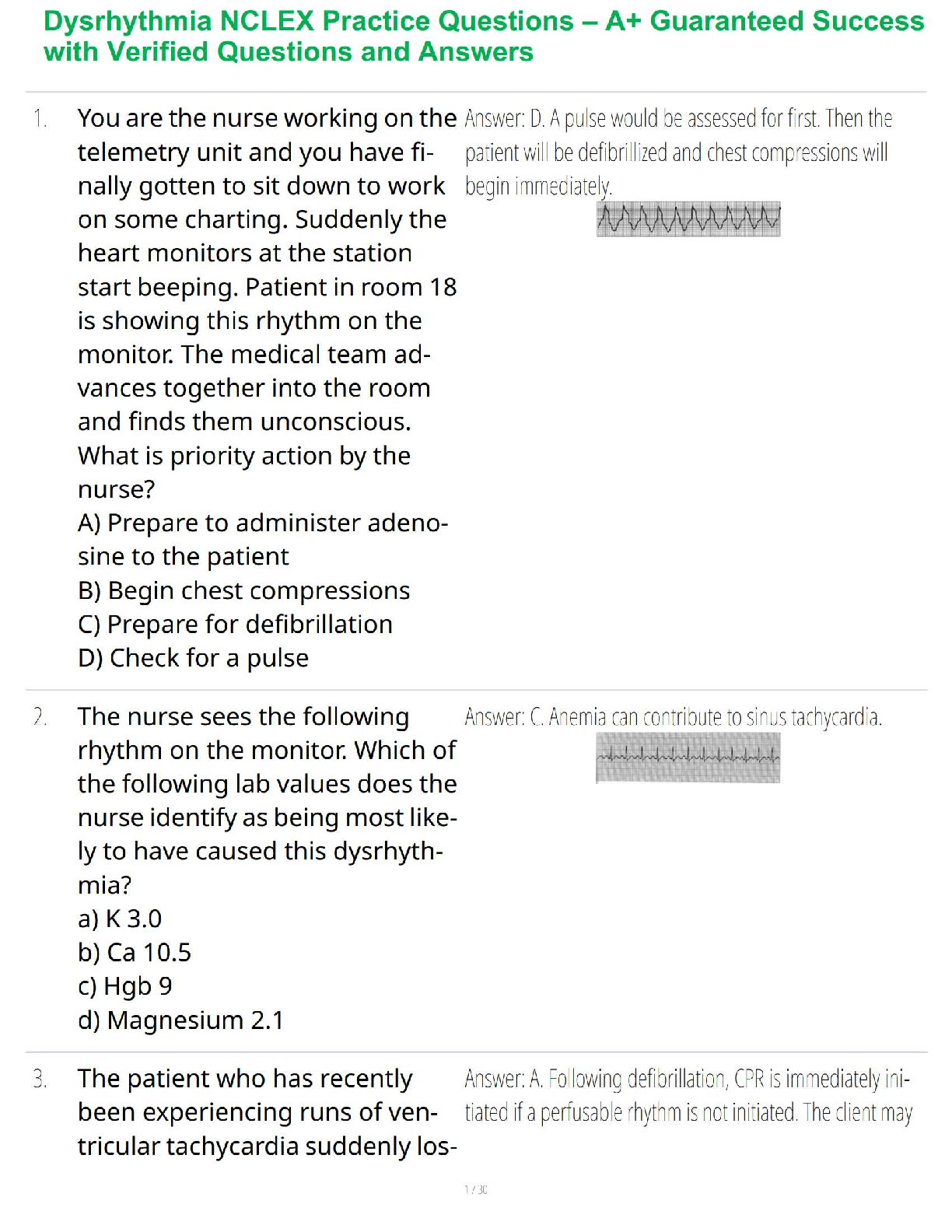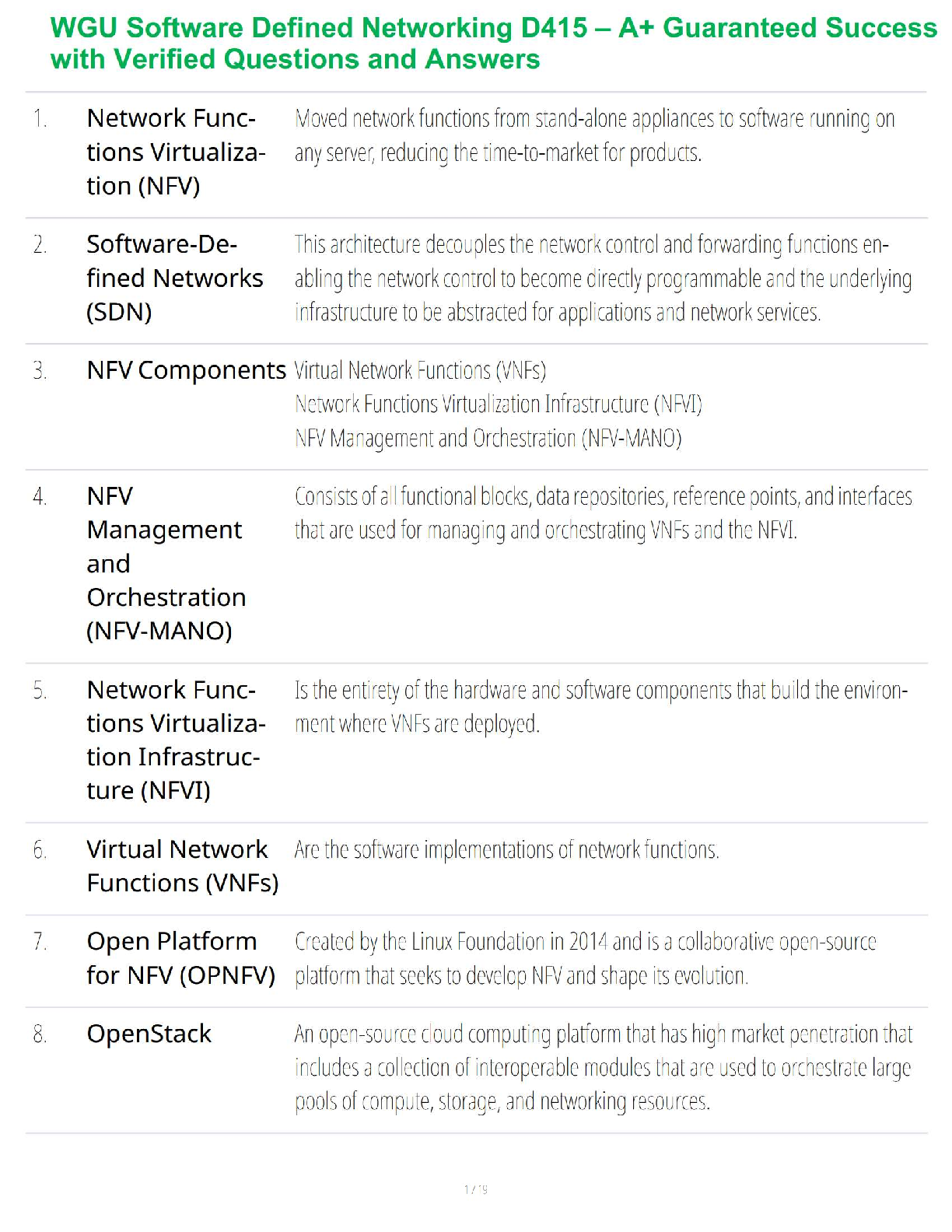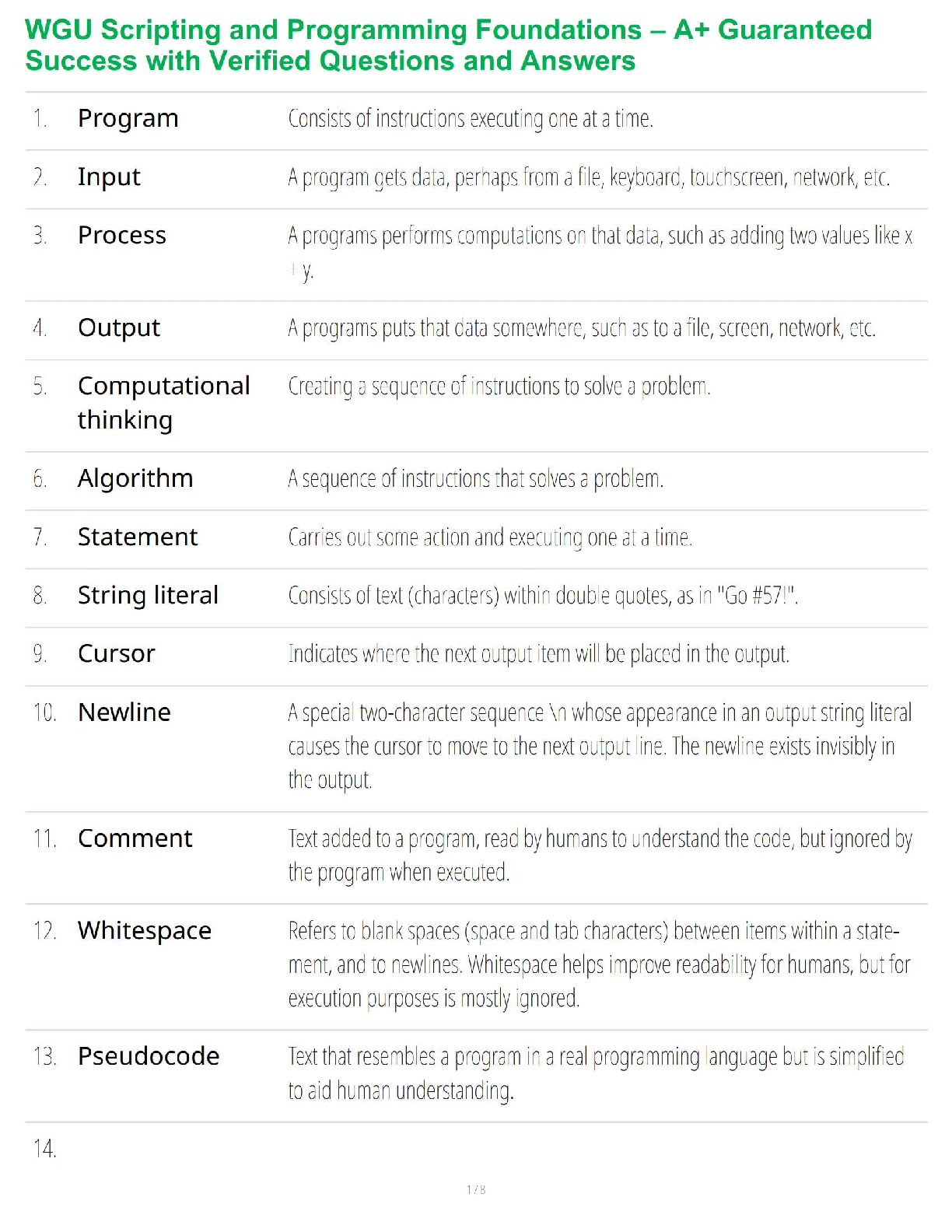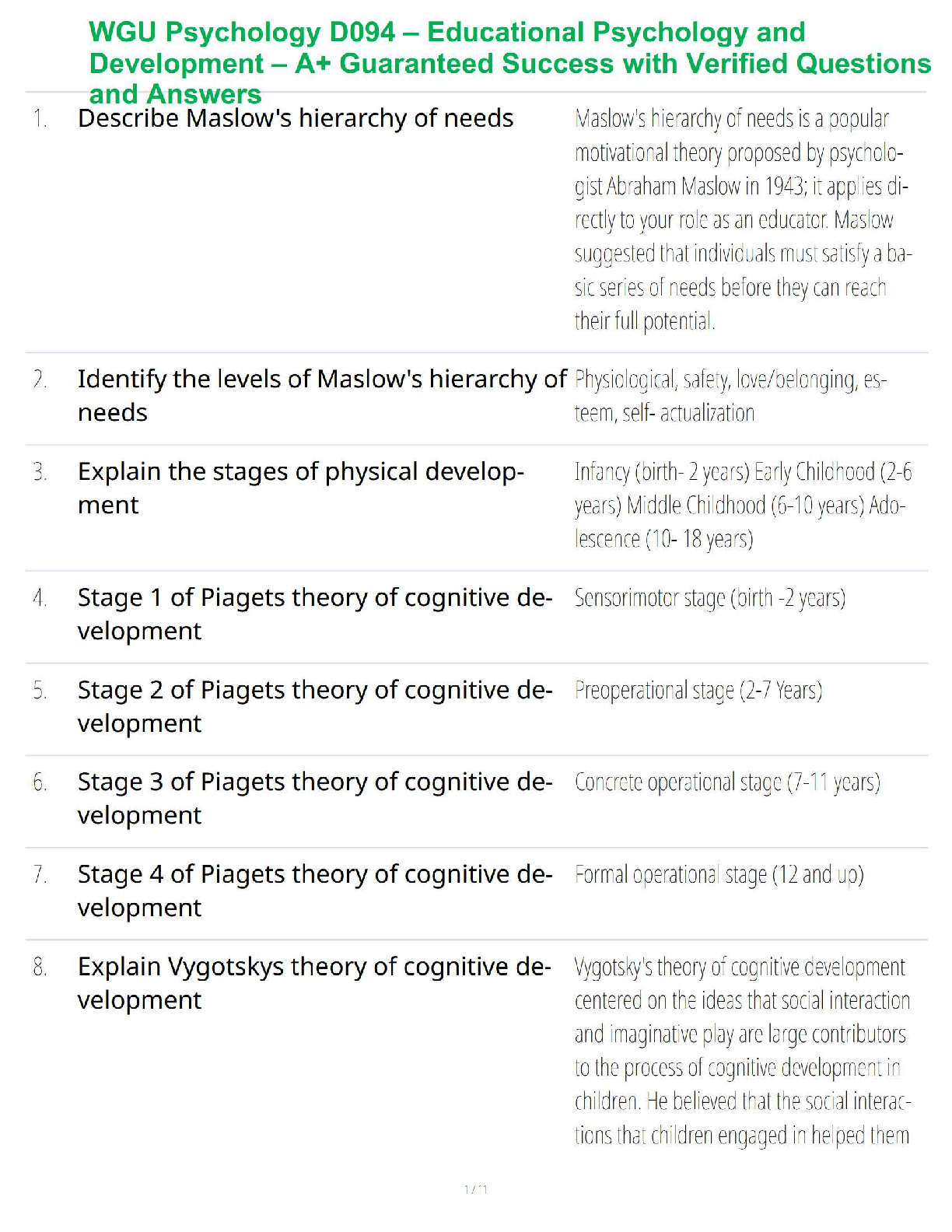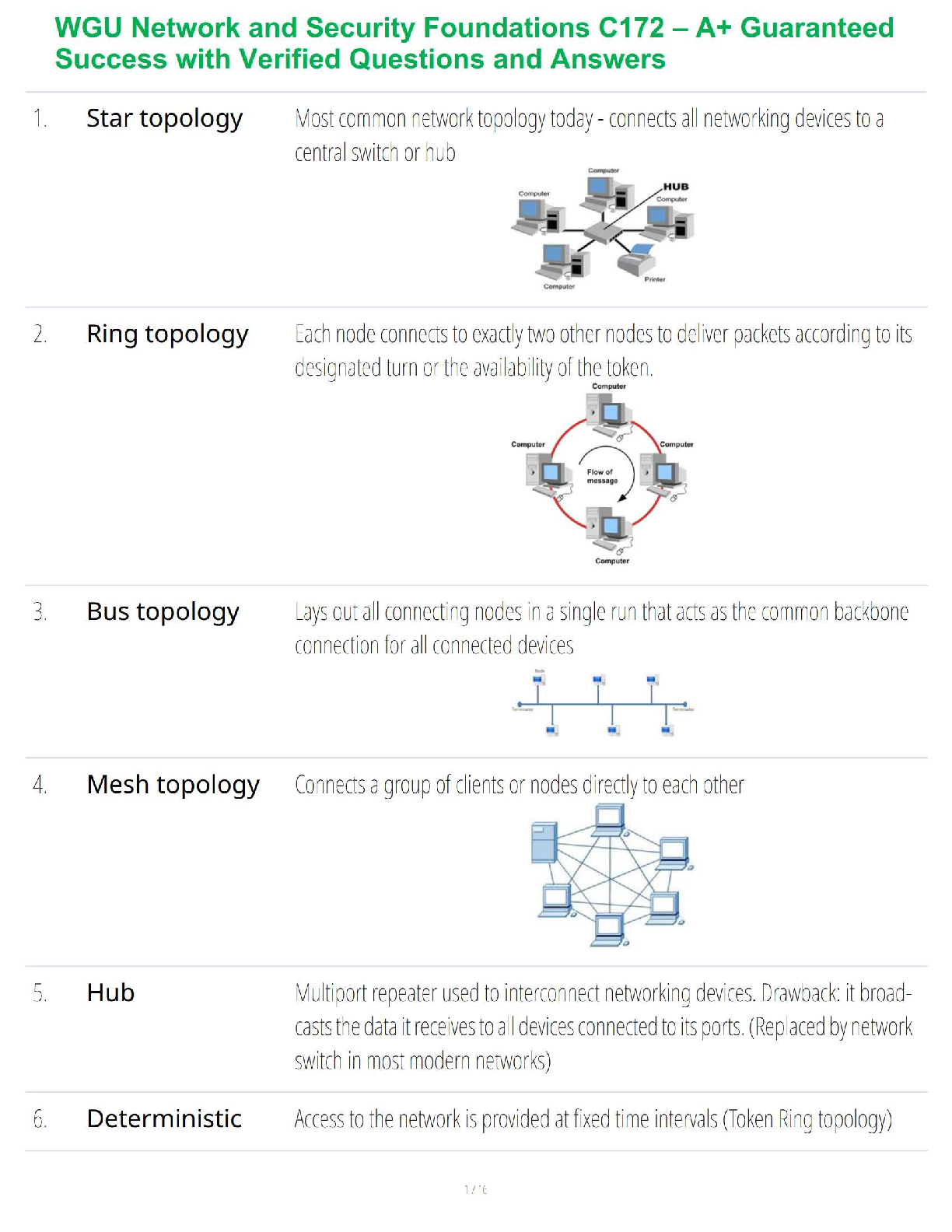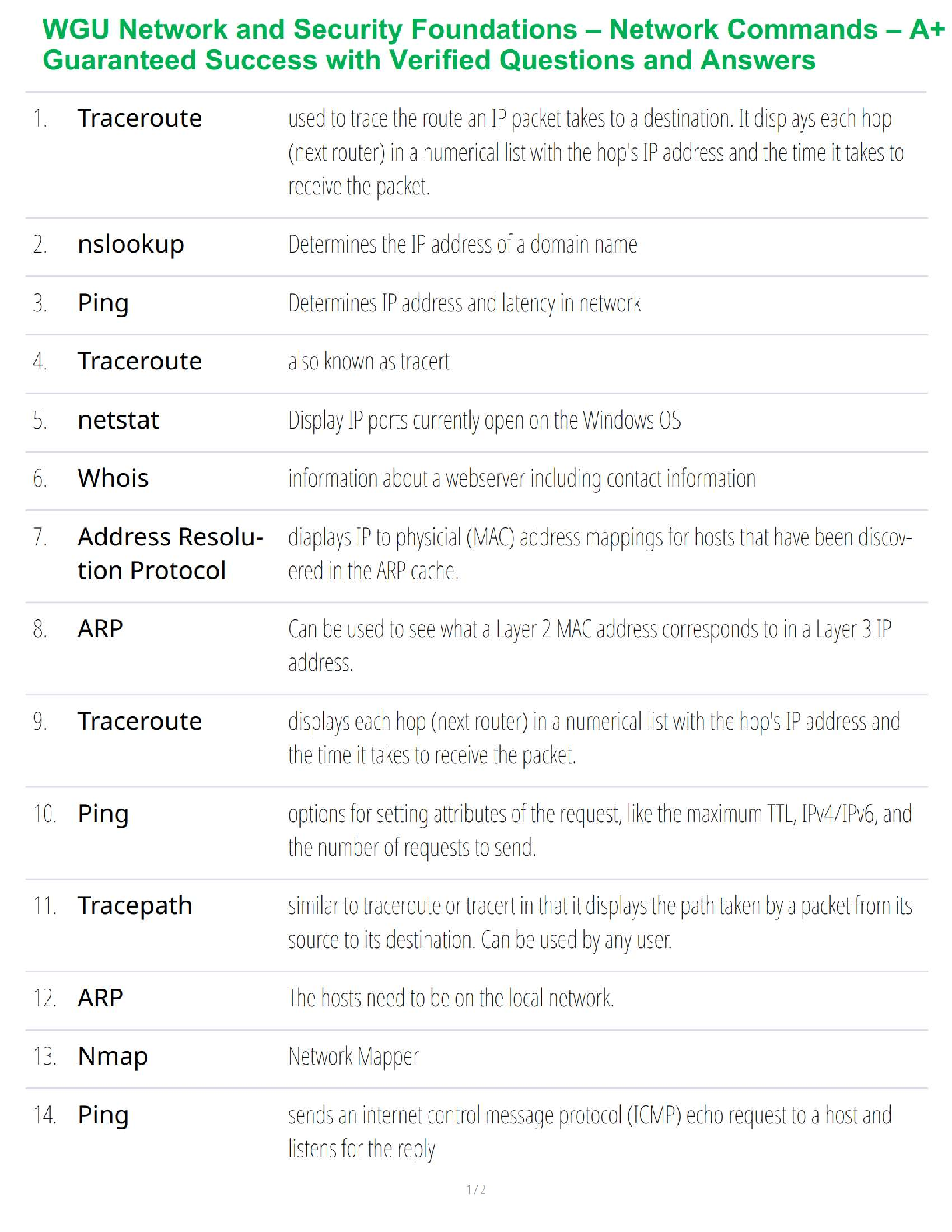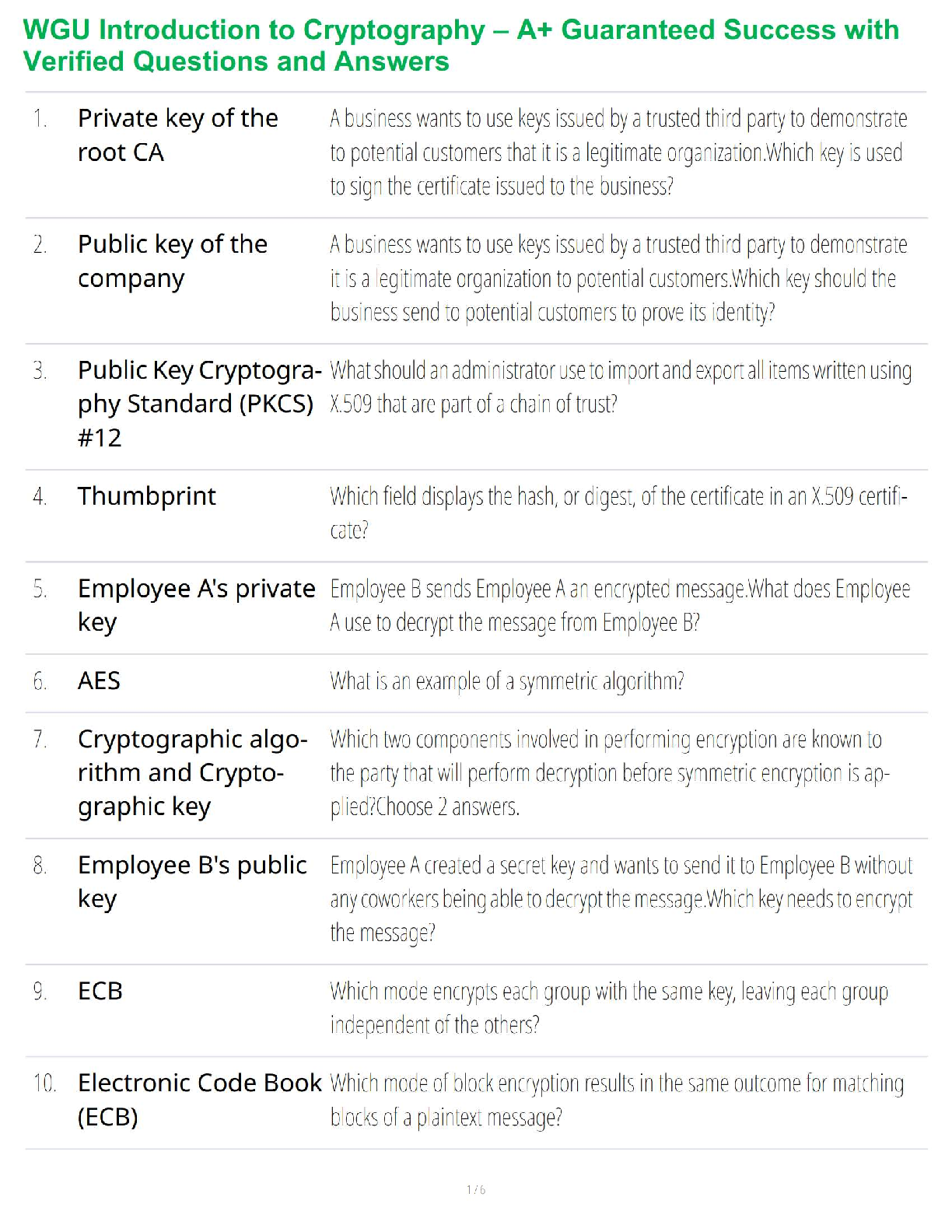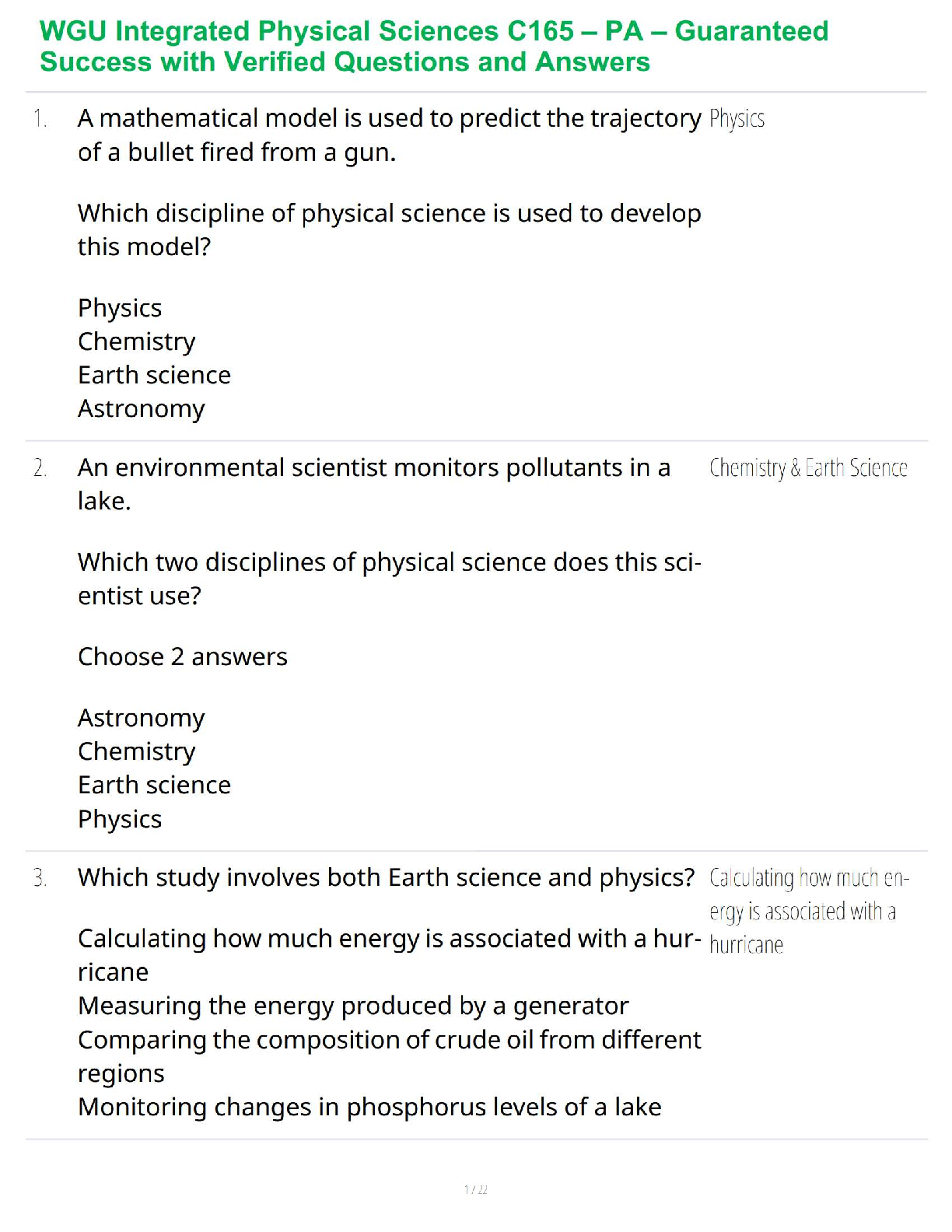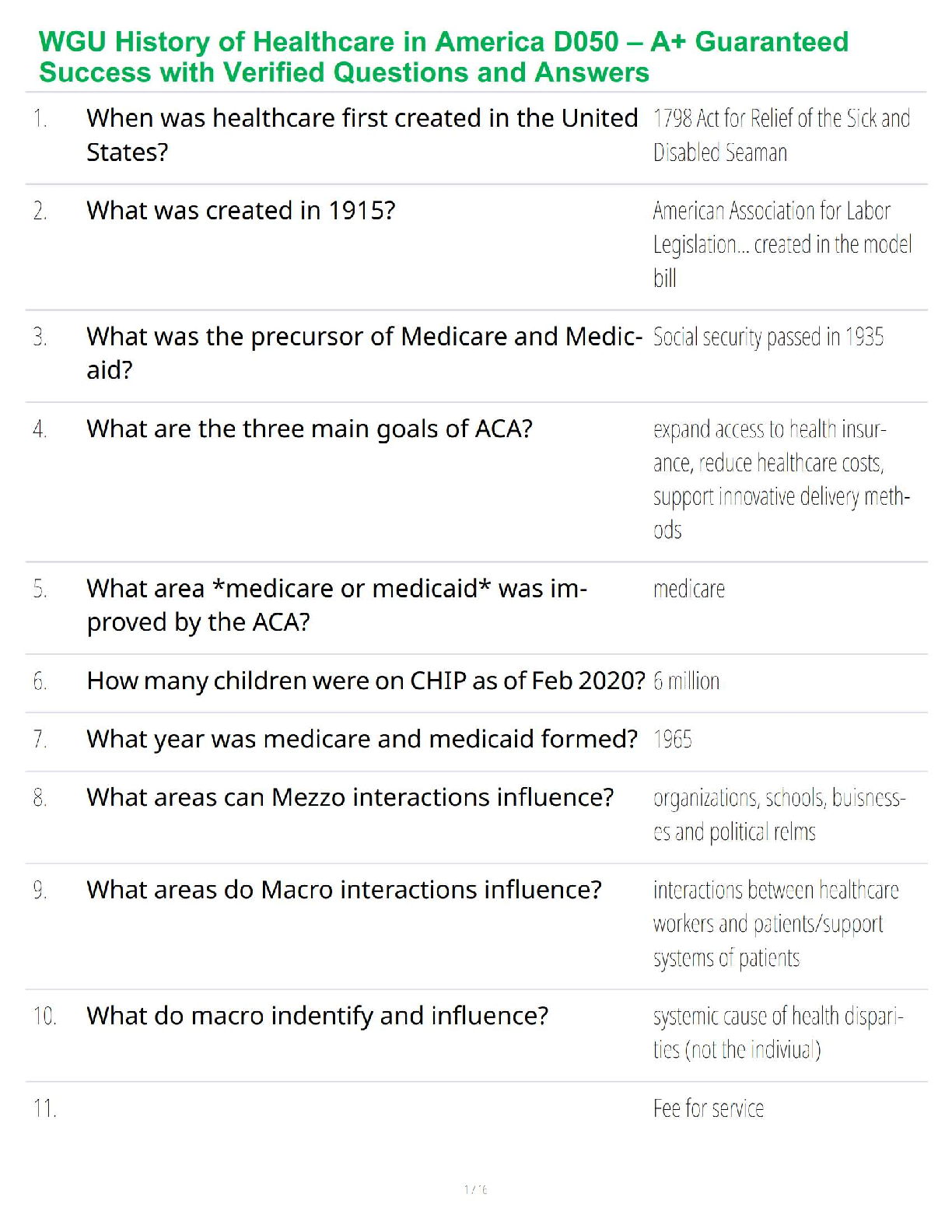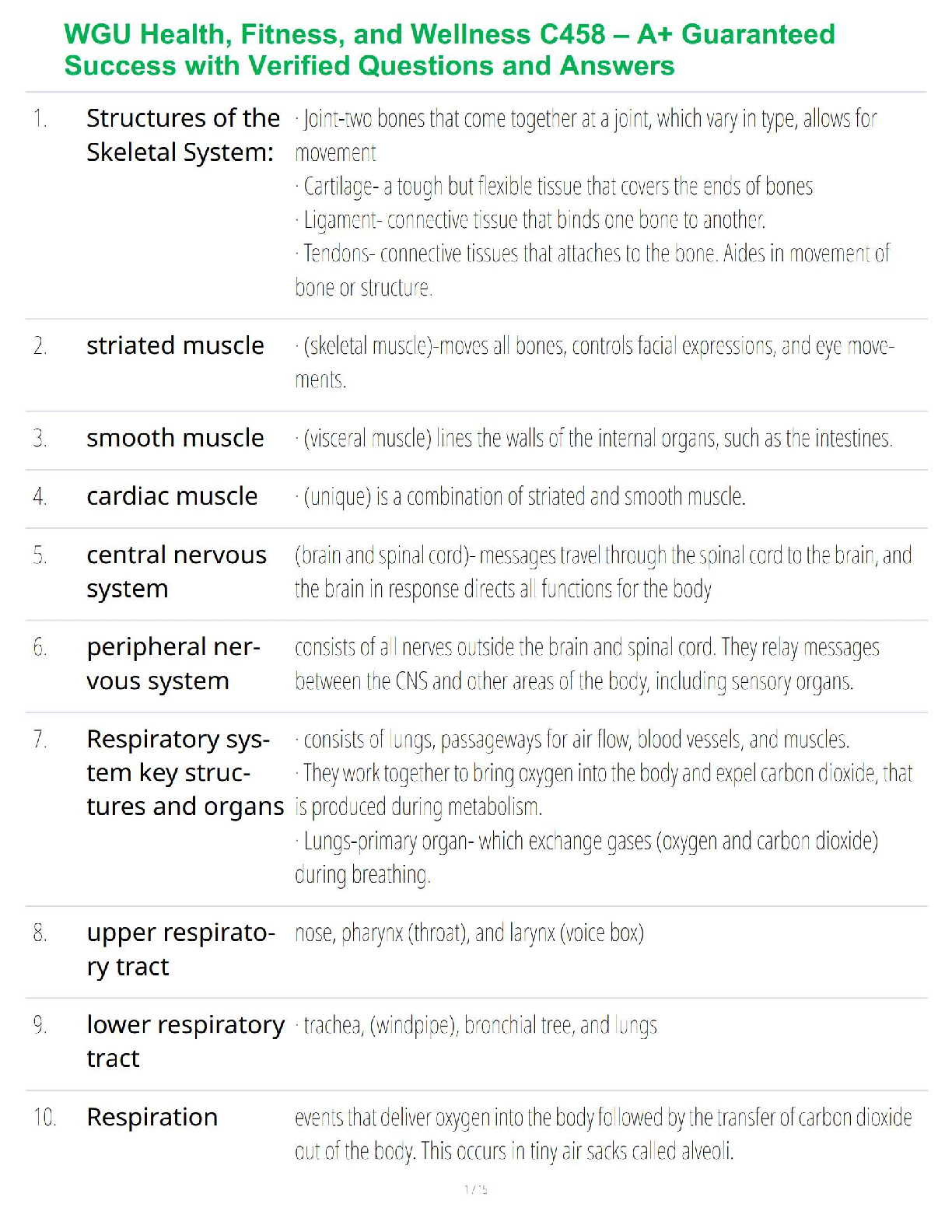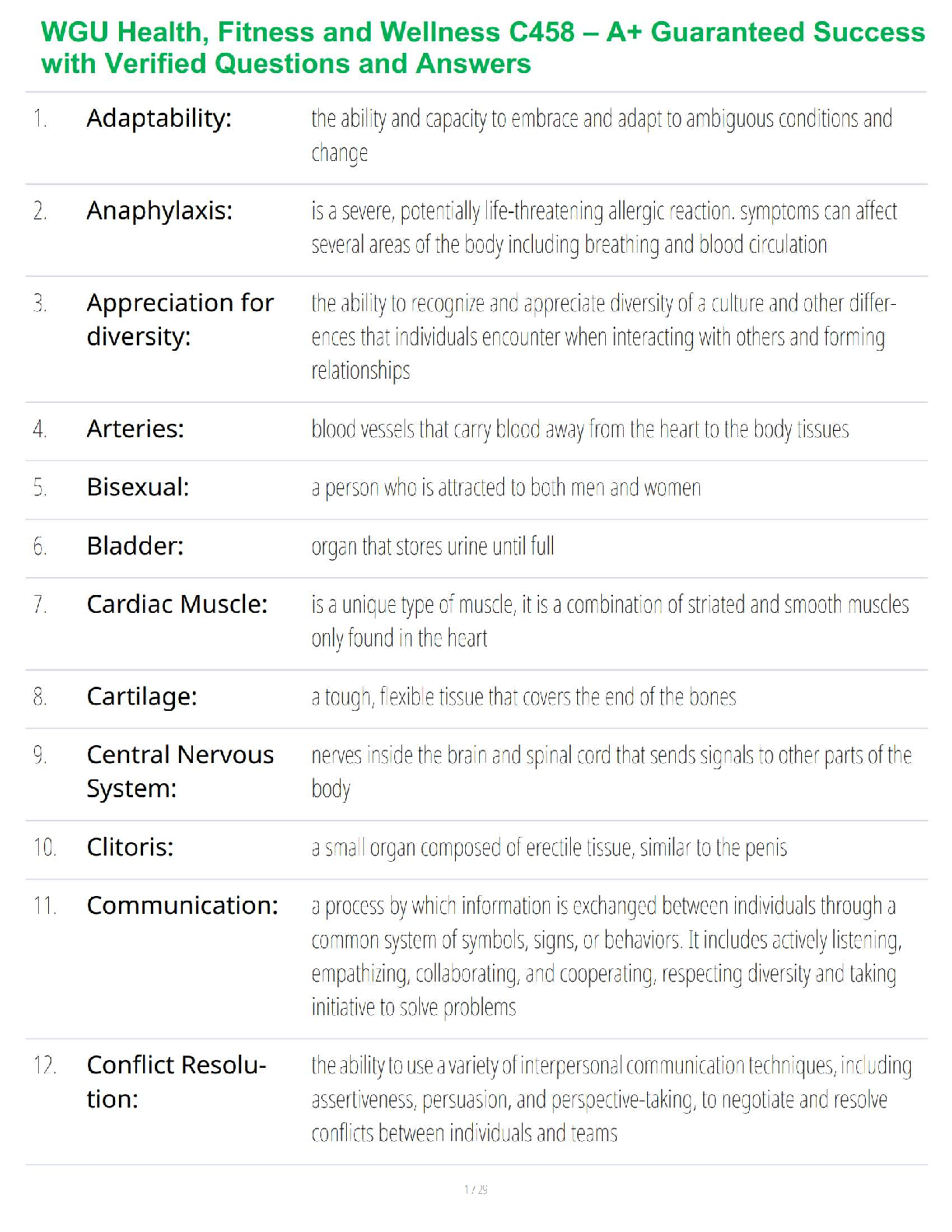Economics > STUDY GUIDE > Columbia State Community CollegeECON 2100Economics Study Guide (All)
Columbia State Community CollegeECON 2100Economics Study Guide
Document Content and Description Below
ECON 2100Economics Study Guide Try to complete this study guide as you work your way through this unit. This study guide is due at the time Unit 1 Test is due. Ways to fill out the Study Guide The ... study guide must be submitted online. You can submit it as a digital document such as a word document or RTF file, but do not save it as a Mac Pages Document. Other acceptable means of submitting the study guide online is via printing it out, filling it out by hand, and then scanning it back as a PDF file or by taking pictures of the pages with your phone and uploading the pictures. Do not submit zip files. Zip files will not be opened and you will receive a zero for the assignment. Chapter 1 Welcome to Economics Define the following: Economics: How people make decisions in the face of scarcity. Scarcity: When the want for things exceeds how many/much is available. Example: Healthcare-not everyone can afford it. Food/Shelter-some are hungry and homeless Trade-Off: Workers use the pay they receive for doing their jobs to purchase other goods. Incentives: Microeconomics: focuses on actions of particular people in the economy like households, workers and business firms Macroeconomics: broad issues such as growth, unemployment, inflation and trade balance. Marginal: having a little more or less of something and how that would affect the economy Rational Choices: Goods: The items people purchase/sell Services: Goods & Service- a market in which firms are sellers of what they produce and households are buyers Consumption: how much a household will use the goods/services Capital: assets Economic model: Model that tests an economic theory This study source was downloaded by 100000793680026 from CourseHero.com on 06-13-2021 14:51:55 GMT -05:00 https://www.coursehero.com/file/61004965/Economics-Study-Guide-1rtf/ This study resource was shared via CourseHero.comCircular flow diagram: diagram that views the economy as households and firms interacting in goods and services and the labor market Division of labor: Dividing the production of a product into many different tasks to make it instead of all of it being done by one worker. Specialization: workers or firms focus on particular tasks for which they are well suited for their over all production process Exports: products, goods and services made locally and sold over seas Imports: products goods and services made over seas and brought here Market: interaction between buyers and sellers; demand and supply Answer the following: Explain the circular flow model in full. Start with households: Households pay for goods and services from the firms providing revenue to them. The revenue pays for the wages and goods that the firms produce. In return the firm is able to provide the wages, salaries and benefits to the household and supply the products they need. Compare and contrast a command economy with a market economy: Each market needs workers and deals with the supply and demand of products. Workers are paid wages and people buy things that are needed. The difference in a command economy and a market economy is who is in charge of those decisions and who drives the market. In a command economy the government determines what products are needed, what they will be sold for, how much is needed and how much the employee’s will make for their work. In a market economy private society determines what products need to be made however private individuals determine how they will be made and how much they will be sold for. Individuals also decide how much they will pay in wages to make the product and how many they will make available to the public. Compare and contrast Microeconomics and Macroeconomics: Both deal with answering questions about the economy and how money needs to be or is allocated. Macro changes can affect the micro of a business/situation. Micro is just that economics on a smaller scale such as individuals, families, businesses etc. Macro is the economy on a larger scale such as government, enacted policies or taxes etc and how they will affect the business. It is kind of like a ying yang the both make up the economy as a whole and need each other in order to be whole. One half is the people and businesses how they will spend their money. How many hours will I need to work in order to pay the bills? How many employee’s This study source was downloaded by 100000793680026 from CourseHero.com on 06-13-2021 14:51:55 GMT -05:00 https://www.coursehero.com/file/61004965/Economics-Study-Guide-1rtf/ This study resource was shared via Course [Show More]
Last updated: 3 years ago
Preview 1 out of 8 pages

Buy this document to get the full access instantly
Instant Download Access after purchase
Buy NowInstant download
We Accept:

Reviews( 0 )
$10.00
Can't find what you want? Try our AI powered Search
Document information
Connected school, study & course
About the document
Uploaded On
Jun 13, 2021
Number of pages
8
Written in
All
Additional information
This document has been written for:
Uploaded
Jun 13, 2021
Downloads
0
Views
168


.png)
.png)








